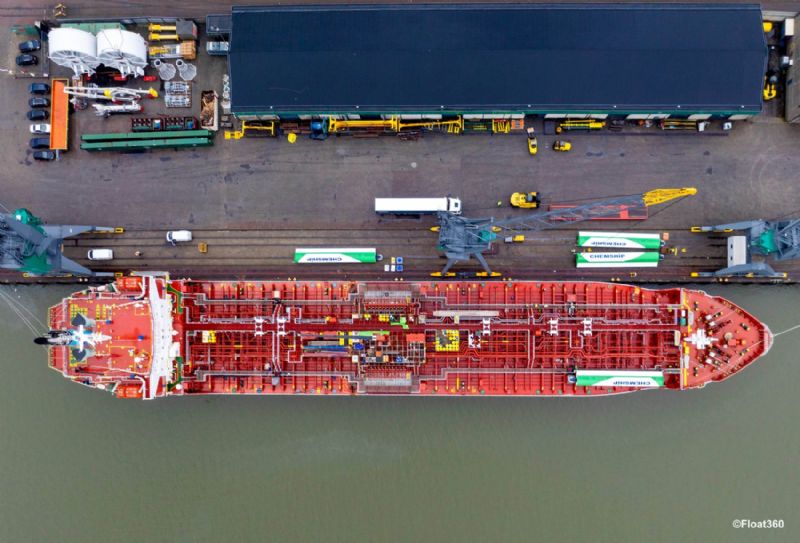
Chemship blazes the trail with wind propelled chemical tanker
Chemical Challenger targets 15% CO2 savings on Transatlantic route
Rotterdam, 19 February 2024 - Chemship today commissioned its first ship with wind assisted ship propulsion. This makes the MT Chemical Challenger the first chemical tanker in the world to be equipped with sustainable wind technology. The ship will serve on shipping company Chemship’s Trans-Atlantic route between the East Coast of the United States and the Mediterranean.
This week four 16-metre-high aluminium wind sails were installed on board the 134-metre long vessel. The VentoFoils from Econowind create a direct wind surface of 180 m2. Smart vacuum technology quintuples the force of the wind, creating a gross wind surface of 900 m2. This is equivalent to an imaginary sail of 30 by 30 metres. Chemship expects to achieve an average CO2 reduction of 10% with these turbo sails.
Leading the way in sustainability
Chemship has a relatively young fleet with an average ship age of seven years. With wind assisted ship propulsion, CEO Niels Grotz sees shipping returning to its roots: “As an avid sailor, I know the power of the wind. We will now harness this sustainable and free energy source on MT Chemical Challenger. Despite the fact that shipping already has the lowest carbon footprint of all transport modes, we can use wind to make our existing fleet even more sustainable. With the VentoFoils, we will use less fuel and thus reduce CO2 emissions. For this vessel, we anticipate an annual CO2 reduction of 850 tonnes. This is equivalent to the yearly CO2 emissions of over 500 passenger cars.”
ETS CO2 pricing
The emergence of wind-assisted sailing coincides exactly with the introduction of the European Emissions Trading System for the shipping industry. Since 1 January, shipowners have been paying for the emissions associated with transporting goods by sea to and from European ports. Niels explains: “Our customers increasingly demand CO2 reports. The better our ships perform, the higher the rating from our customers. Fewer emissions are not only beneficial for the environment, you will also notice it directly in your wallet.”
Business as usual
The wind sails fit well within the existing configuration of Chemship’s tankers. Operations Director Michiel Marelis explains the choice of wind propulsion: “Shipping is evolution: one step at a time. Chemship was looking for a solution that would not interfere with normal operations. These wind sails were easy to install without adding reinforcements to the ship. They are lightweight, have a small deck ‘footprint’ and do not obstruct the crew’s line of sight. At the push of a button, they can fold or set the sails as needed. Above wind force seven, the sails fold automatically, which is much safer. Now it is learning by doing. With positive results, we will also equip the next vessel with VentoFoils.”
Sustainability strategy
Wind propulsion is part of a larger sustainability plan, as Michiel explains: “The beauty of these turbo sails is that you can show it to customers. They immediately capture everyone’s imagination. We hope this will inspire others to choose wind assisted propulsion too. We also focus on less visible aspects such as improved lubricating oils and a coating that enables the ship to glide through the water more efficiently. Cumulatively, this leads to fuel savings of over 15%. This all goes hand in hand with a CO2 reduction. Chemship remains committed to making the fleet more sustainable.”
About Chemship
Chemship operates an advanced fleet of stainless steel chemical tankers, providing transport of liquid chemicals in bulk. Chemship serves routes around the world, focusing on the routes between the Eastern Mediterranean to Northwestern Europe, and between the Eastern Mediterranean to the US.
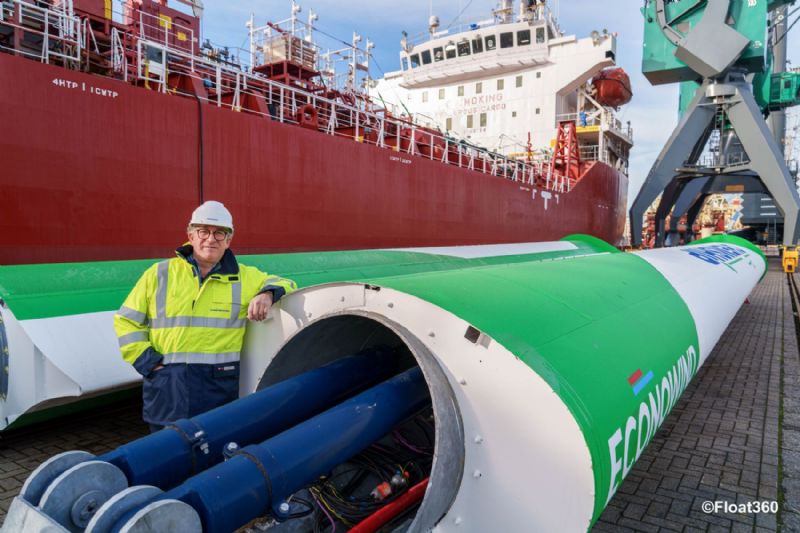
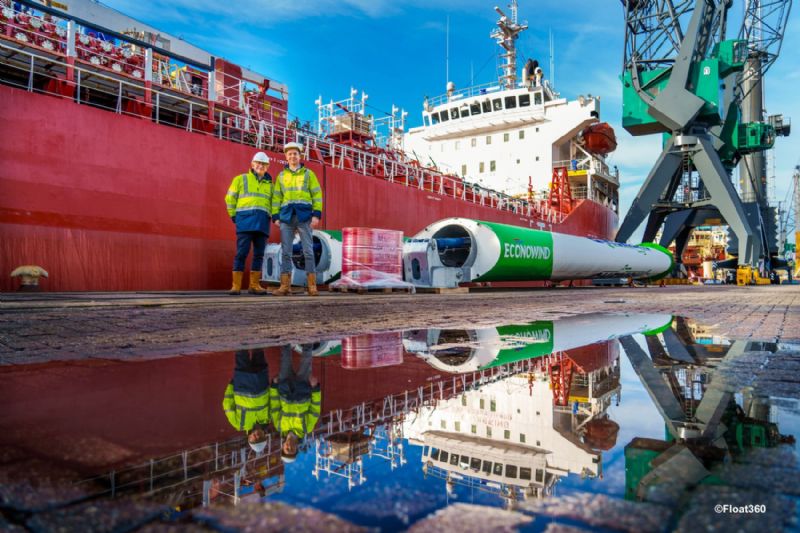

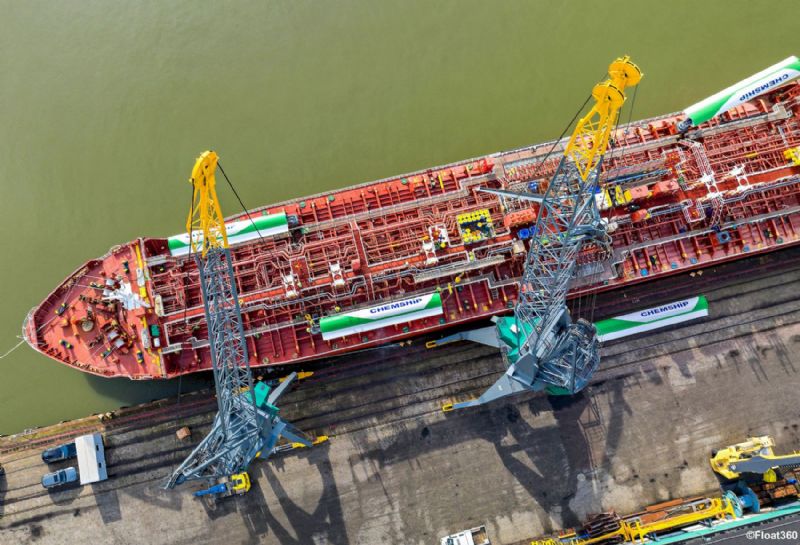
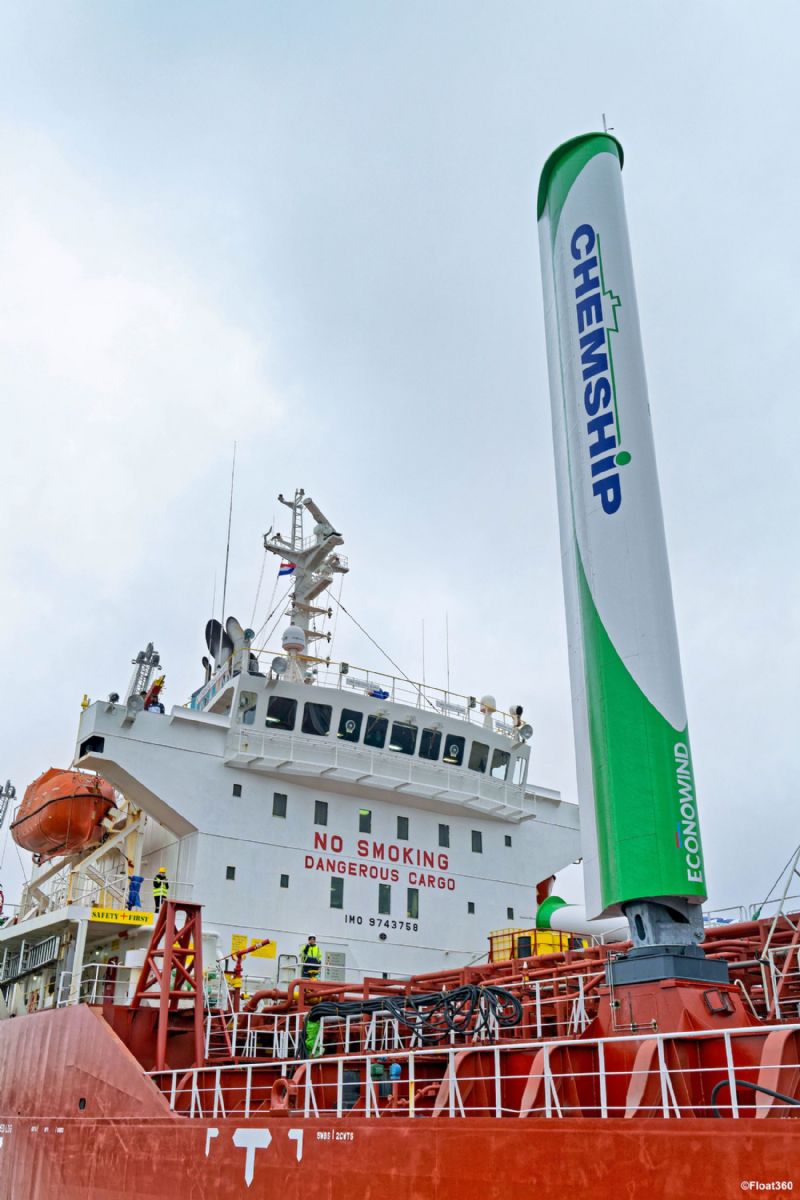
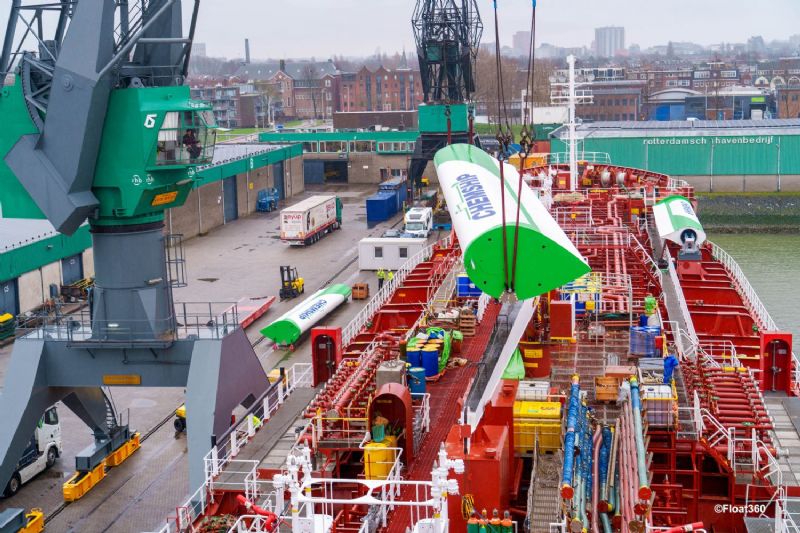
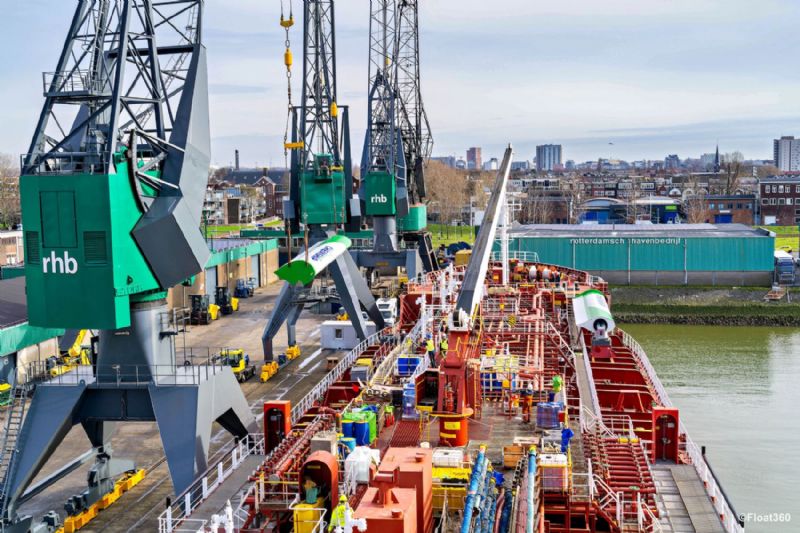
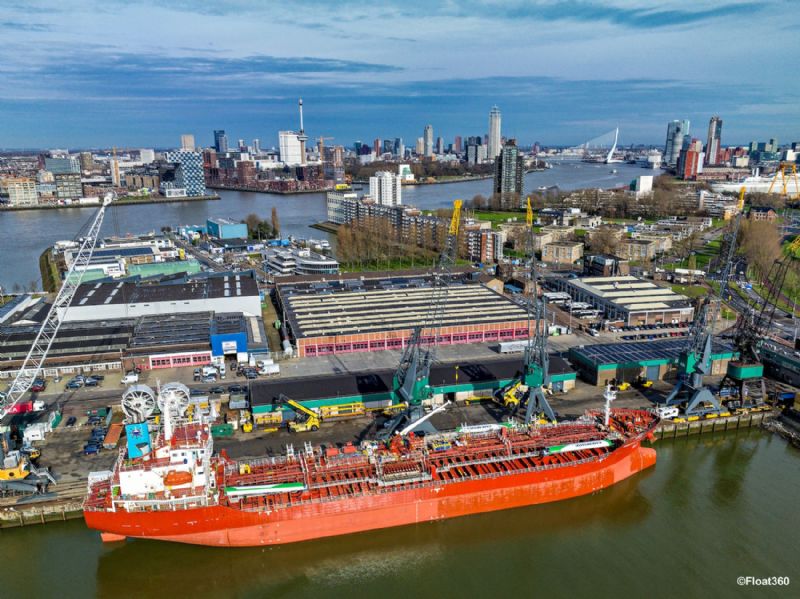
Chemship heeft primeur met windvoortstuwing chemicaliëntanker
Chemical Challenger gaat voor 15% CO2-besparing op Trans-Atlantische route
Rotterdam, 19 februari 2024 – Rederij Chemship heeft haar eerste schip met Wind Assisted Ship Propulsion in gebruik genomen. Hiermee is MT Chemical Challenger de eerste chemicaliëntanker ter wereld die met ondersteunende windvoortstuwing gaat varen. Het schip doet dienst op de Trans-Atlantische route tussen de Oostkust van de Verenigde Staten en het Middellandse Zeegebied.
Afgelopen week zijn vier 16-meter hoge aluminium windzeilen aan boord geïnstalleerd in de Rotterdamse haven. Met deze VentoFoils van Econowind wordt een direct windoppervlak gecreëerd van 180 m2. Slimme vacuümtechnologie vervijfvoudigt de kracht van de wind, waardoor een bruto windoppervlak van 900 m2 wordt gerealiseerd. Dat staat gelijk aan een denkbeeldig zeil van 30 bij 30 meter. Chemship verwacht met deze turbozeilen een gemiddelde CO2-besparing van 10% te realiseren.
Vooroplopen met vergroenen
Chemship beschikt over een relatief jonge vloot met een gemiddelde leeftijd van zeven jaar. CEO Niels Grotz ziet de scheepvaart met ondersteunende windvoortstuwing terugkeren naar de basis: “Als fervent zeiler ken ik de kracht van de wind. Deze duurzame en gratis energiebron gaan we nu benutten op MT Chemical Challenger. Ondanks dat zeetransport van alle modaliteiten nu al de laagste carbon footprint heeft, kunnen we met wind onze bestaande vloot verder verduurzamen. Met de VentoFoils gaan we minder brandstoffen verbruiken en dus CO2-uitstoot reduceren. Voor dit schip verwachten wij een jaarlijkse CO2-reductie van 850 ton. Dit staat gelijk aan de jaarlijkse CO2-uitstoot van ruim 500 personenauto’s.”
CO2-beprijzing
De start van het varen met windondersteuning valt precies samen met de introductie van het Europese emissiehandelssysteem voor de scheepvaart. Reders betalen sinds 1 januari voor de uitstoot die gepaard gaat met het vervoer van goederen over zee van en naar Europese havens. Niels licht toe: “Onze klanten vragen in toenemende mate om CO2-rapportages. Des te beter onze schepen presteren des te hoger de waardering van klanten. Minder uitstoot is niet alleen gunstig voor het milieu, je merkt het ook direct in je portemonnee.”
Business as usual
De windzeilen passen goed binnen de bestaande configuratie van de Chemship-tankers. Operationeel Directeur Michiel Marelis vertelt over de keuze voor windvoortstuwing: “Scheepvaart is evolutie. Chemship was op zoek naar een oplossing die de normale bedrijfsvoering niet in de weg zit. Deze windzeilen zijn gemakkelijk te installeren zonder versterkingen aan het schip. Ze zijn lichtgewicht, hebben een kleine ‘footprint’ aan dek en belemmeren het zicht van de bemanning niet. Met een druk op de knop kunnen zij de zeilen inklappen of opzetten als dat nodig is. Boven windkracht zeven klappen de zeilen automatisch in. Dat is wel zo veilig. Het is nu leren in de praktijk. Bij positieve resultaten gaan we ook een volgend schip met VentoFoils uitrusten.”
Duurzaamheidsstrategie
De windvoortstuwing is onderdeel van een groter duurzaamheidsplan. Michiel legt uit: “Het mooie van deze turbozeilen is dat je het aan klanten kunt laten zien. Het spreekt bij iedereen direct tot de verbeelding. Wij hopen hiermee anderen te inspireren om ook voor windondersteuning te kiezen. Daarnaast zetten we ook in op zaken die niet zichtbaar zijn. Je kunt denken aan betere smeerolie en een coating waarmee het schip efficiënter door het water glijdt. Cumulatief leidt dit tot een brandstofbesparing van ruim 15%. En dat gaat hand in hand met een CO2-reductie. Chemship blijft zich inzetten voor het verduurzamen van de vloot.”
Over Chemship
Chemship exploiteert een geavanceerde vloot van roestvrijstalen chemicaliëntankers. Deze vloot voorziet in het transport van vloeibare chemicaliën in bulk. Chemship bedient routes over de hele wereld, met de nadruk op de route van het oostelijk Middellandse Zeegebied naar Noordwest-Europa en de route van het oostelijk Middellandse Zeegebied naar de VS en vice versa.
We use cookies to improve your experience. By continuing to use our site, you accept our Cookies, Privacy Policy,Terms and Conditions. Close X